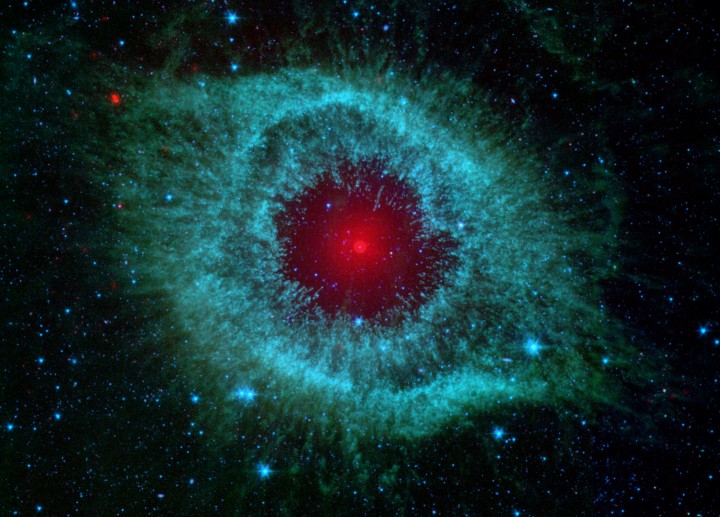
|
Explanation: Dust makes this cosmic eye look red. The eerie Spitzer Space Telescope image shows infrared radiation from the well-studied Helix Nebula (NGC 7293) a mere 700 light-years away in the constellation Aquarius. The two light-year diameter shroud of dust and gas around a central white dwarf has long been considered an excellent example of a planetary nebula, representing the final stages in the evolution of a sun-like star. But the Spitzer data show the nebula's central star itself is immersed in a surprisingly bright infrared glow. Models suggest the glow is produced by a dust debris disk. Even though the nebular material was ejected from the star many thousands of years ago, the close-in dust could be generated by collisions in a reservoir of objects analogous to our own solar system's Kuiper Belt or cometary Oort cloud. Formed in the distant planetary system, the comet-like bodies would have otherwise survived even the dramatic late stages of the star's evolution.
|
January February March April May June July August September October November December |
| ||||||||||||||||||||||||||||||||||||||||||||||||
NASA Web Site Statements, Warnings, and Disclaimers
NASA Official: Jay Norris. Specific rights apply.
A service of: LHEA at NASA / GSFC
& Michigan Tech. U.
Based on Astronomy Picture
Of the Day
Publications with keywords: NGC 7293 - Helix Nebula - planetary nebula
Publications with words: NGC 7293 - Helix Nebula - planetary nebula
See also:
- APOD: 2024 February 12 Á HFG1 & Abell 6: Planetary Nebulae
- APOD: 2023 December 24 Á NGC 2440: Cocoon of a New White Dwarf
- APOD: 2023 October 3 Á MyCn 18: The Engraved Hourglass Planetary Nebula
- NGC 1360: The Robin's Egg Nebula
- APOD: 2023 May 7 Á The Helix Nebula from CFHT
- APOD: 2023 April 16 Á M2 9: Wings of a Butterfly Nebula
- The Medusa Nebula
